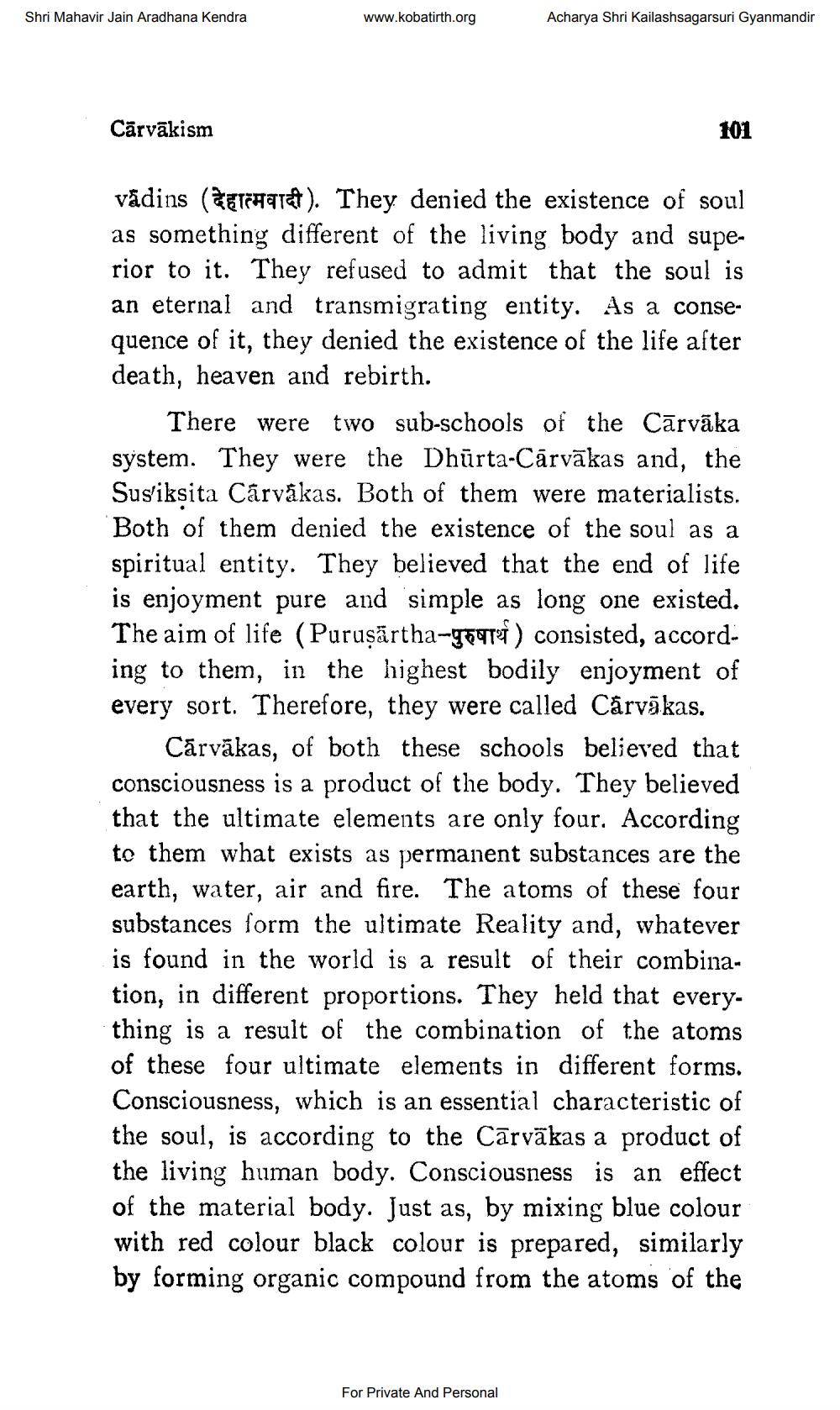________________
Shri Mahavir Jain Aradhana Kendra
www.kobatirth.org
Acharya Shri Kailashsagarsuri Gyanmandir
Cārvākism
101
vādins (@Eraard). They denied the existence of soul as something different of the living body and superior to it. They refused to admit that the soul is an eternal and transmigrating entity. As a consequence of it, they denied the existence of the life after death, heaven and rebirth.
There were two sub-schools of the Cārvāka system. They were the Dhūrta-Cārvākas and, the Susiksita Cārvākas. Both of them were materialists. Both of them denied the existence of the soul as a spiritual entity. They believed that the end of life is enjoyment pure and simple as long one existed. The aim of life (Purusärtha-gear) consisted, according to them, in the highest bodily enjoyment of every sort. Therefore, they were called Cärvākas.
Cárvākas, of both these schools believed that consciousness is a product of the body. They believed that the ultimate elements are only four. According to them what exists as permanent substances are the earth, water, air and fire. The atoms of these four substances form the ultimate Reality and, whatever is found in the world is a result of their combination, in different proportions. They held that everything is a result of the combination of the atoms of these four ultimate elements in different forms. Consciousness, which is an essential characteristic of the soul, is according to the Cārvākas a product of the living human body. Consciousness is an effect of the material body. Just as, by mixing blue colour with red colour black colour is prepared, similarly by forming organic compound from the atoms of the
For Private And Personal




